site search
online catalog
HANDCRAFTED TIN & PLASTER CANTEEN PAINTED WITH A WONDERFUL WINTER CAMP SCENE BY A GETTYSBURG VETERAN
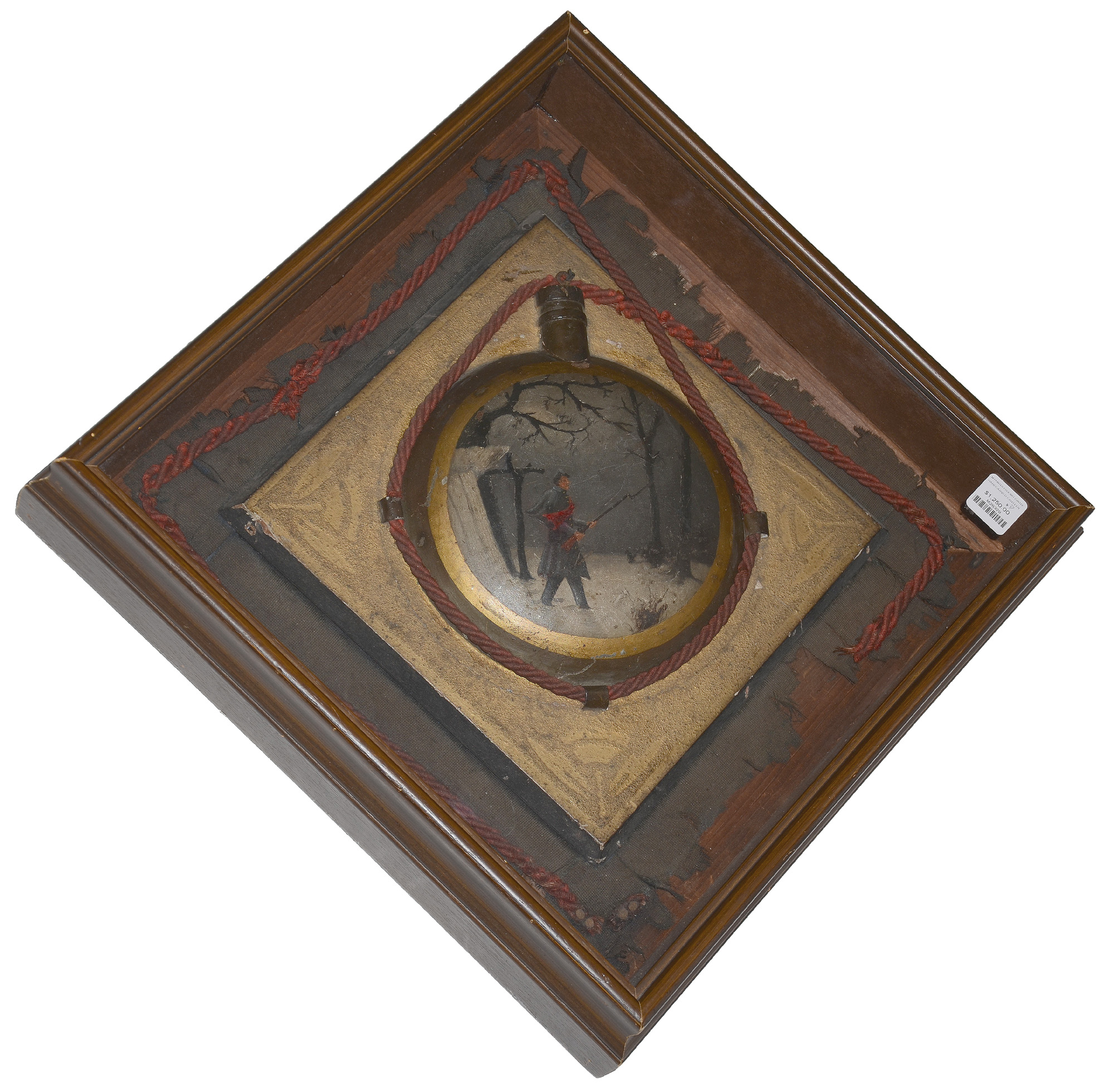
Hover to zoom

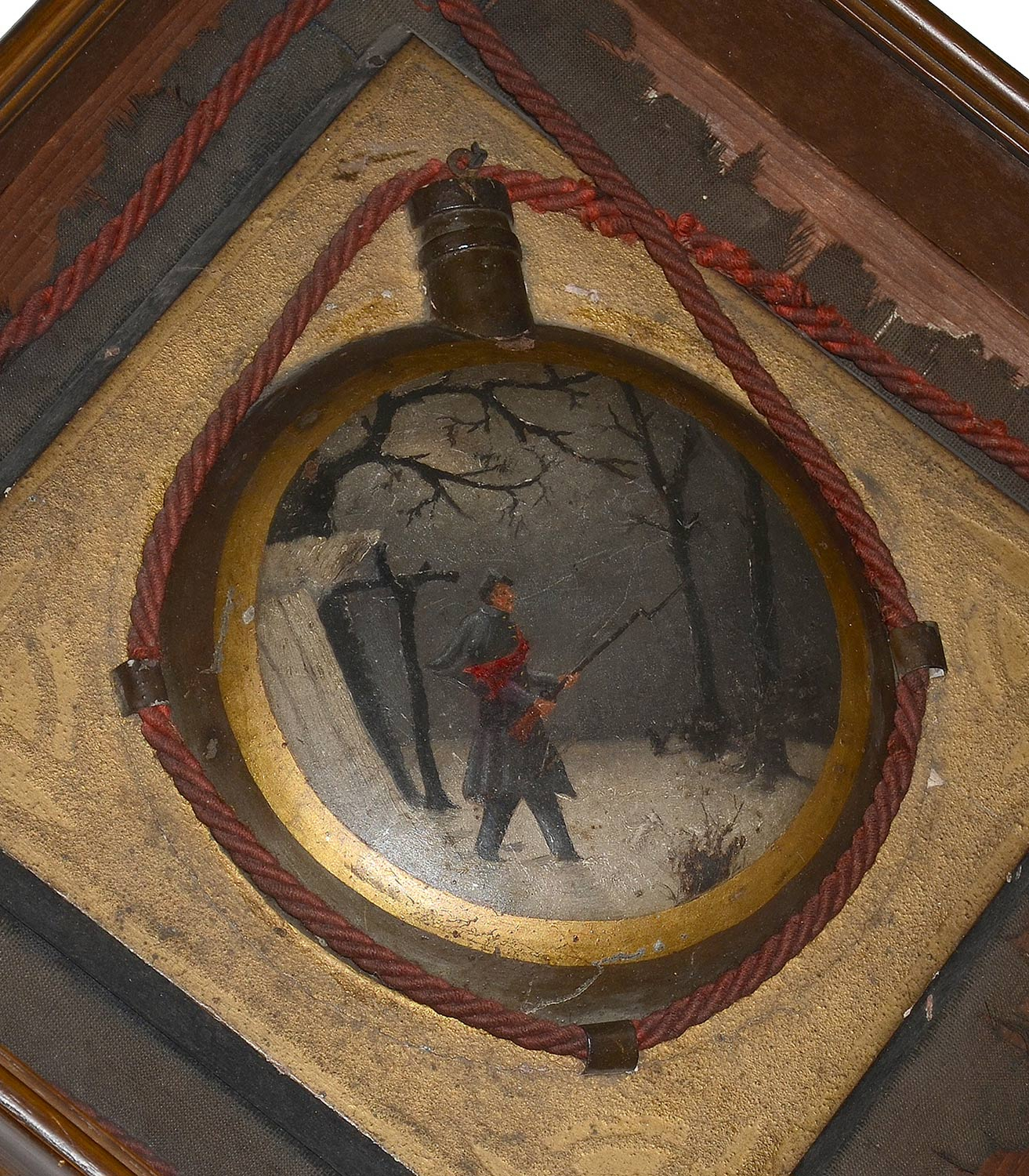
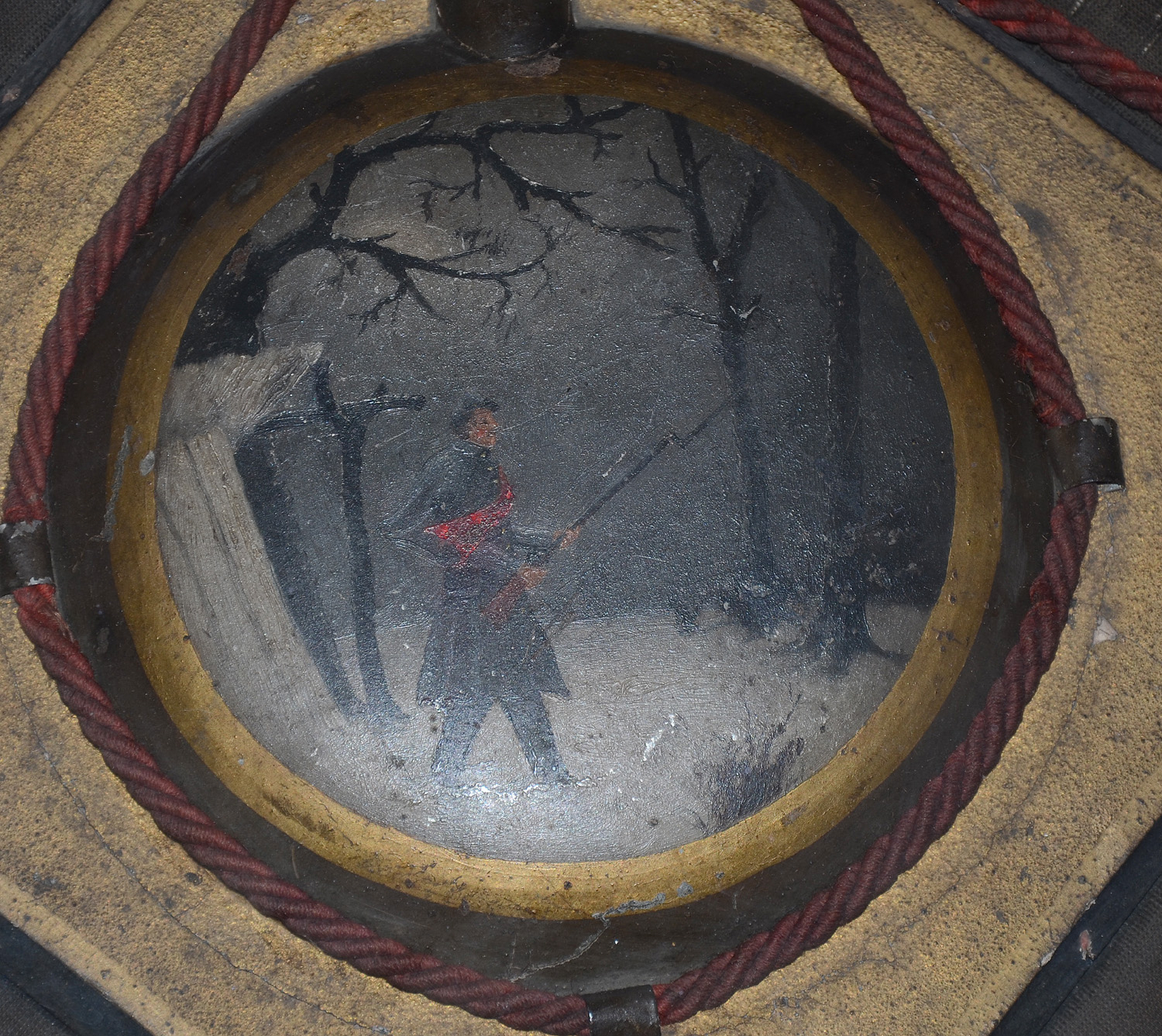
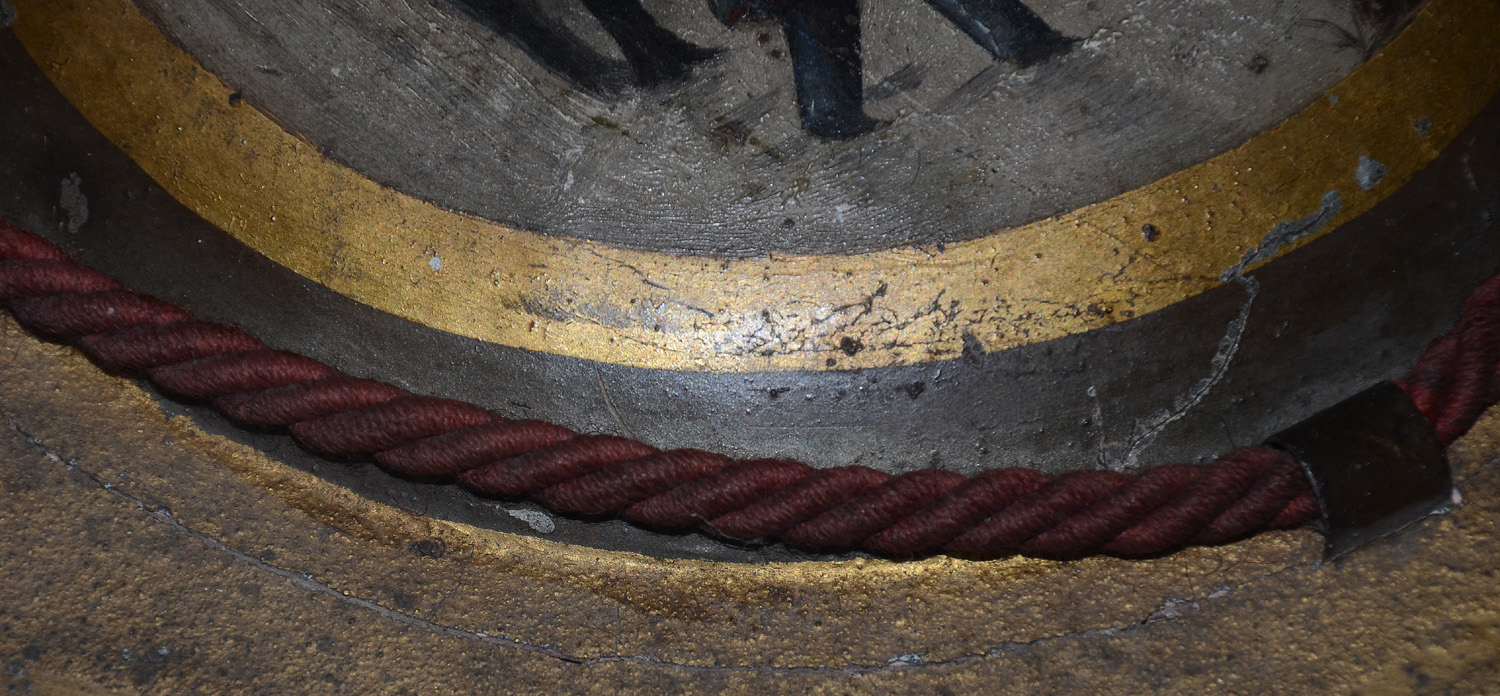
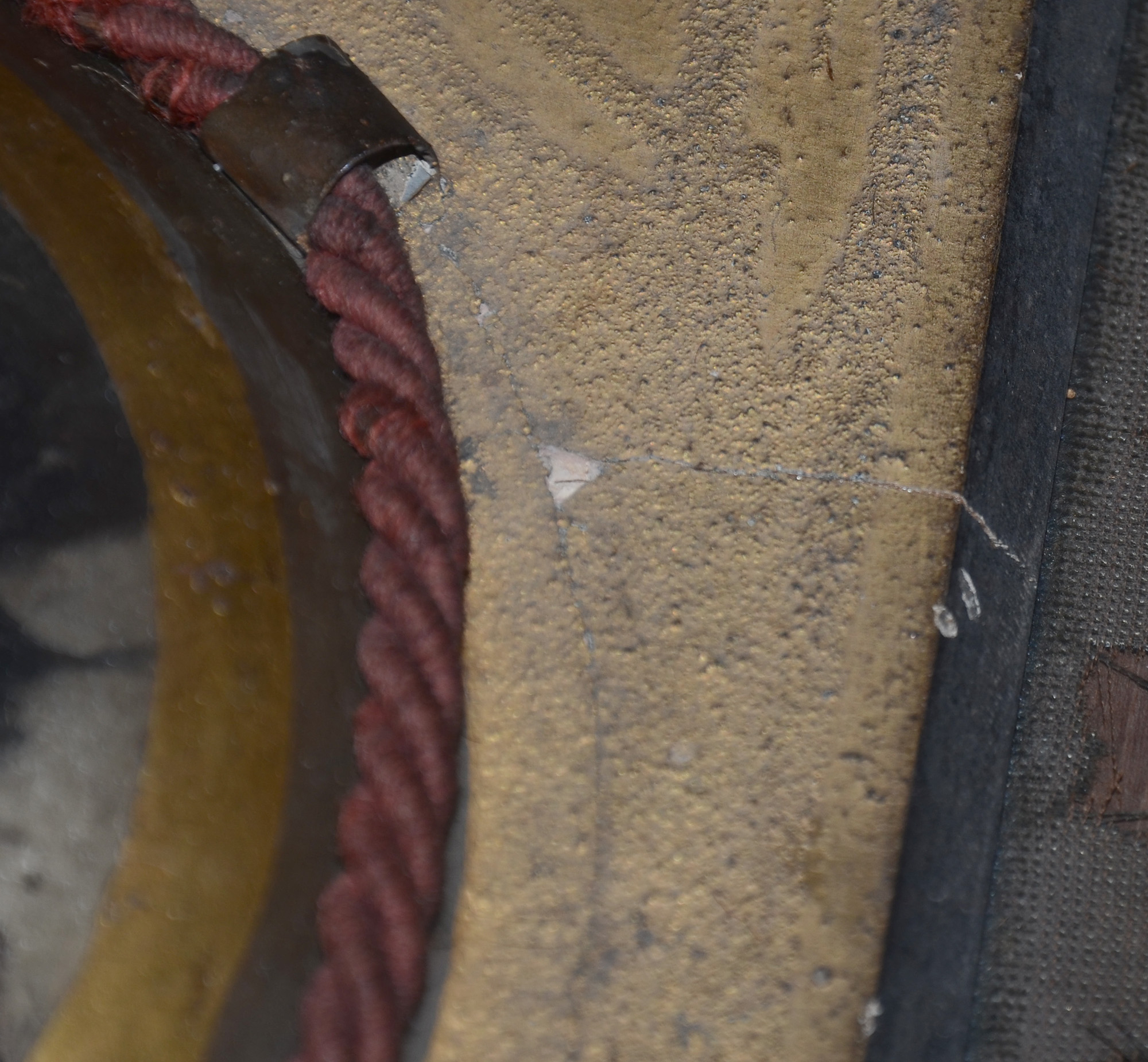
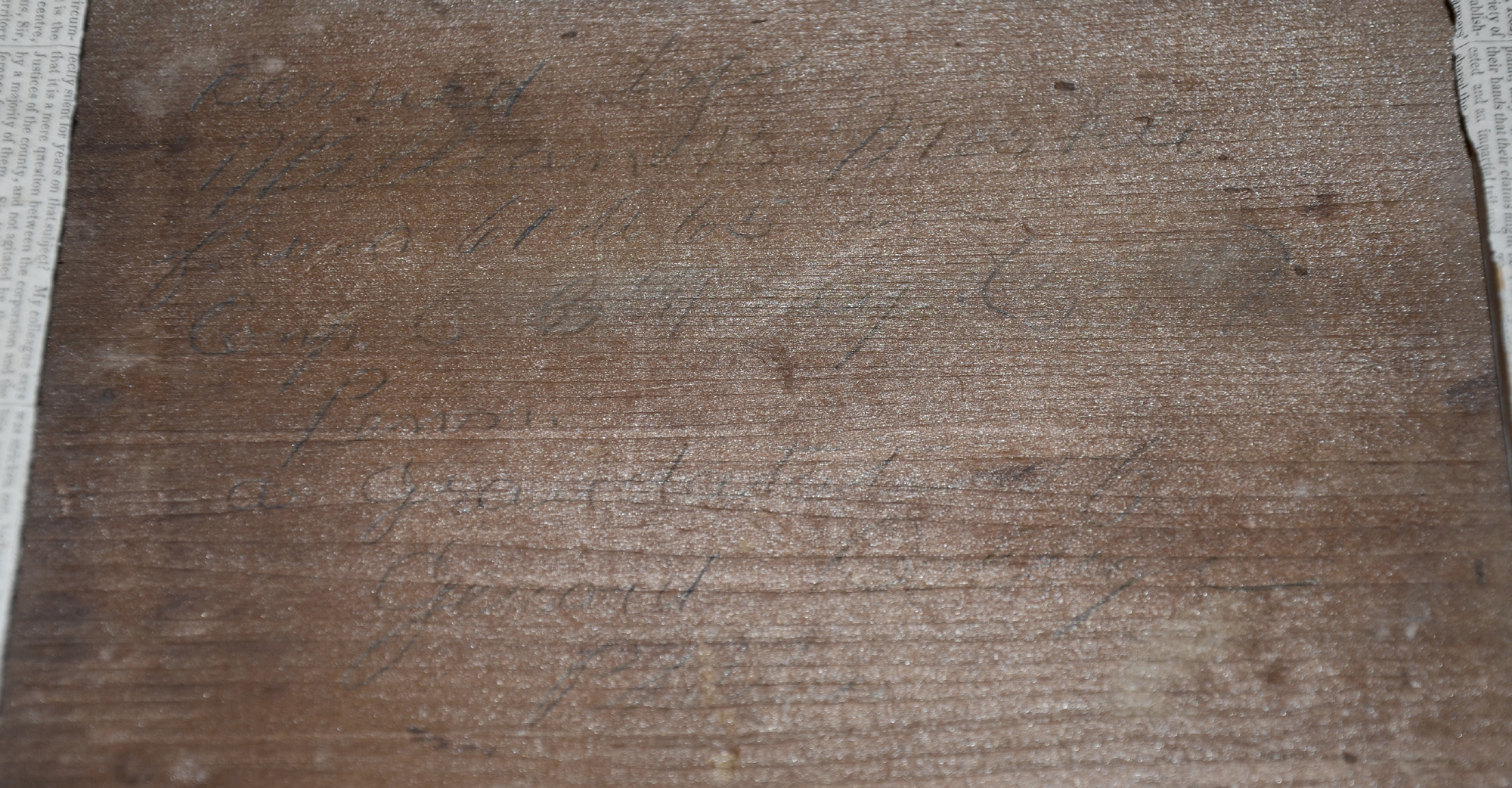
$750.00 SOLD
Originally $1,250.00
Quantity Available: None
Item Code: M26329
This framed piece of artwork was done by William H. Merkle who was a member of Companies A & B of the 16th Pennsylvania Cavalry.
The item looks to consist of a square piece of wood with a circle cut at center. Merkle then placed a tin bowl upside-down in the circle to form half of a smooth side canteen. He then added three small tin tubes to act as sling keepers and plastered all around the edges to hold the “canteen” to the piece of wood. He then painted the wood surface gold to hide the seam where the plaster and wood met. Next, he fashioned a spout and stopper out of plaster and added an eye hook and piece of chain for realism.
Once everything was dry, he proceeded to paint the edge of the “canteen” body and spout a dark brown to look like aged patina. Next, he put in a gold border and at center did a wonderful winter camp scene. The scene consists of a snow-covered field framed by bare trees with a sky that looks dark and cold with a bit of moonlight shinning through some clouds. Along the left edge is a shebang made out of a forked stick and ridge pole. Advancing from the tent is a soldier holding his musket with fixed bayonet in front of him. He almost looks like he is at the position of “On Guard” as described in the bayonet manual of the time. He wears a dark forage cap and greatcoat with a red lined cape and matching dark trousers. Merkle took the time to add gilt buttons and tinted cheeks to the soldier. The art work is well done and is in very nice condition. There are a few tiny chips of paint missing around the edges exposing the tin underneath but they are hardly worth mentioning. There is also a visible ring around the “canteen” where the plaster meets the “canteen” rim.
After painting the winter scene Merkle added a red cord sling through the sling keepers and wrapped it around the wood base. He then mounted it to a dark piece of cloth and housed it in a frame that meas. approx. 15.25 x 15.25 inches x 3.00 inches deep. Written in faint pencil on the reverse of the wood frame is “CARVED BY WILLIAM H. MERKLE FROM 61 TO 65 IN CO. B (???) PENN. GRADUATE OF GIRARD COLLEGE PHILA.
Over the years the cloth that the piece was mounted on has rotted and now presents a ragged edge throughout. Also, the red cord has darkened from age and dirt and a small section is missing. It seems obvious that at one time the glass on the face of the frame was missing allowing dirt and wear to do its work. The glass now present is probably a replacement.
The reverse of the frame is covered with old newspaper and it is obvious that the back was once removed. Most likely to clean the piece, remove the rotted cloth and replace the glass.
William Henry Merkel (spelled Merkle in the records) was born January 1, 1845.
On October 18, 1862 he enlisted as a Private in Company A, 16th Pennsylvania Cavalry and was later transferred to Company B. Of his Civil War service his obituary says:
“Mr. Merkel served throughout the Civil War and was among the few persons to actually witness Lee’s surrender to Grant at Appomattox. He was on guard duty at one of the windows when the southern general yielded.
Famed in the army as a sharpshooter, Mr. Merkel’s most meritorious deed during the war was the single-handed capture of an enemy’s sniper nest during the battle of Gettysburg. He had three brothers who served in the war, and one of them was killed in action only a few feet from him at Gettysburg. Mr. Merkel carried his body from the field. Mr. Merkel was mustered out at Richmond, Va., on August 11, 1865.”
William H. Merkle’s name does appear on the 16th Pennsylvania Cavalry panel on the Pennsylvania Memorial at Gettysburg showing he was present for the battle. However research fails to find his brother who, as stated in the obituary, was supposedly killed there.
After the war Merkle attended Girard College and studied medicine but despite obtaining his degree he never went into practice. He was a florist in Philadelphia and West Chester for many years.
Merkle served in an advisory capacity during the Spanish American War and was later a member of the General Thomas L. Rosser Camp No. 3, United Spanish War Veterans. As the years past he found himself the last member of the William L. Currie Post #18 of the GAR.
The year before his death Merkle attended the 1938 reunion at Gettysburg.
He died on April 30, 1939 and is buried in Fernwood Cemetery, Philadelphia. [ad] [ph:L]
~~~~~~~~~~~~~~~~~~~~~~~~~~~~~~~~~~~
THIS ITEM, AS WITH ALL OTHER ITEMS AVAILABLE ON OUR WEB SITE,
MAY BE PURCHASED THROUGH OUR LAYAWAY PROGRAM.
CLICK HERE FOR OUR POLICIES AND TERMS.
THANK YOU!
Inquire About HANDCRAFTED TIN & PLASTER CANTEEN PAINTED WITH A WONDERFUL WINTER CAMP SCENE BY A GETTYSBURG VETERAN
Most Popular
Historical Firearms Stolen From The National Civil War Museum In Harrisburg, Pa »
Theft From Gravesite Of Gen. John Reynolds »
Selection Of Unframed Prints By Don Troiani »
Fine Condition Brass Infantry Bugle Insignia »
Large English Bowie Knife With Sheath 1870’S – 1880’S »
Imported (Clauberg) Us Model 1860 Light Cavalry Officer's Saber »
featured item
RARE “SNELL” SWORD BAYONET – M1841 RIFLE, CIRCA 1855
Scarce “Snell” or “ring-style” sword bayonet for the Mississippi Rifle. When it became evident that riflemen needed a bayonet to put them on equal footing with regular musket-armed infantry in close combat, several methods of attaching long… (490-7260). Learn More »


